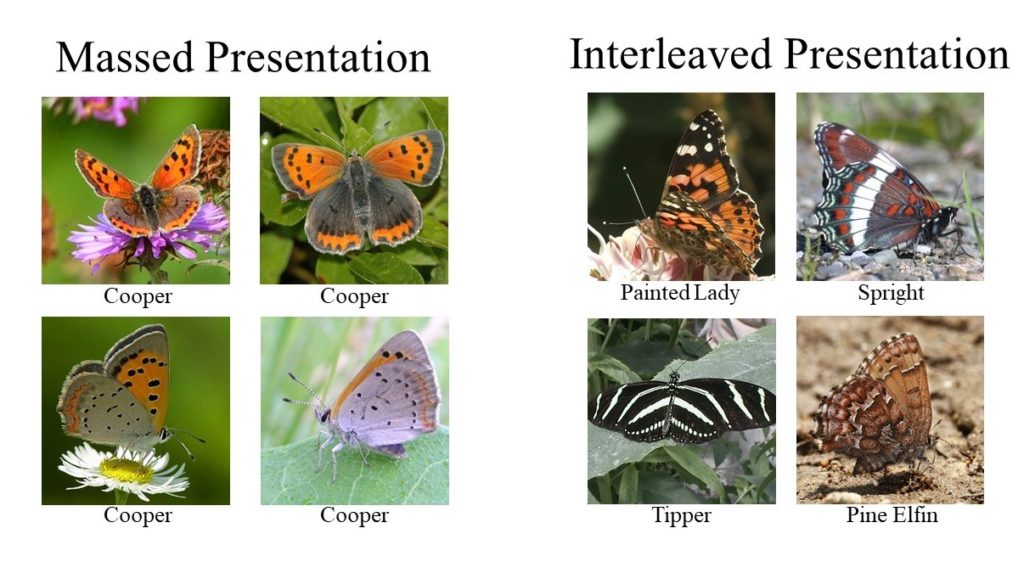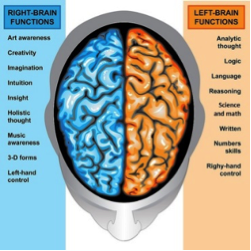By Sabrina Badali, B.S., Weber State University
Cognitive Psychology PhD student starting Fall ‘19, Kent State University
As an undergraduate, I became familiar with the conversations that took place after a major test. My classmates frequently boasted about their all-nighters spent reviewing textbooks and notes. Once grades were released, however, another conversation took place. The same students were confused and felt their scores did not reflect the time they spent preparing. My classmates were using relatively ineffective study strategies; most likely because they did not understand or appreciate the benefits of more effective alternatives.
Some of the most commonly reported study strategies include rereading a textbook and reviewing notes (Karpicke, Butler, & Roediger, 2009). However, those strategies are associated with lower memory performance than other strategies, such as testing oneself while studying, spreading out study sessions, and interleaving or “mixing” material while learning (Dunlosky, Rawson, Marsh, Nathan, & Willingham, 2013). Getting students to change their study habits can prove difficult. An effective way to start, perhaps, is getting students to change their beliefs about these strategies.
Before a learner will independently choose to implement a more effective study strategy (i.e. spreading out study sessions), they need to appreciate the benefits of the strategy and realize it will lead to improved performance. It seems this is often where the problem lies. Many students lack a metacognitive awareness of the benefits of these effective strategies. It is common for students to believe that strategies such as rereading a textbook or cramming are more beneficial than strategies such as testing oneself while learning or spacing out study sessions, a belief that does not match actual memory performance.
Researching Interleaving as a Study Strategy
This underappreciation of the benefits of these effective study strategies was something I recently investigated. In my research project, undergraduate participants completed two category learning tasks – learning to recognize different species of butterflies and learning artists’ painting styles. For each learning task, half of the butterfly species and half of the artists were assigned to the massed study condition. In the massed condition, all images of a category would be presented consecutively before moving on to the next species or artist. For example, all four images of one butterfly species would be presented back-to-back before moving on to images of the next species. The remaining half of the categories were assigned to the interleaved study condition. In the interleaved condition, images from a category were spread throughout the learning task and two images from the same category were never presented consecutively. For example, the first image of the “Tipper” butterfly may be shown early on, but the remaining three images would be distributed throughout the learning task such that participants viewed several other species before viewing the second image of the “Tipper”.

After completing these tasks, and completing a final memory assessment, participants were given a brief explanation about the difference between the massed method of presentation and the interleaved method. After this explanation, participants provided a metacognitive judgment about their performance on the study. They were asked whether they thought they performed better on massed items, interleaved items, or performed the same on both.
Misalignment of Evidence and Beliefs
I found that 63% of the participants thought they performed better on massed items, even though actual memory performance showed that 84% of participants performed better on interleaved items. There was a clear disconnect between what the student participants thought was beneficial (massing) versus what was actually beneficial (interleaving). Participants did not realize the benefits of interleaving material while learning. Instead, they believed that the commonly utilized, yet relatively ineffective, strategy of massing was the superior choice. If students’ judgments showed they thought interleaving was less effective than massing, how could we expect these students to incorporate interleaving into their own studying? Metacognition guides students’ study choices, and, at least in this example, students’ judgments were steering them in the wrong direction. This poses a problem for researchers and instructors who are trying to improve students’ study habits.
Using these effective study strategies, such as interleaving, makes learning feel more effortful. Unfortunately, students commonly believe it is a bad thing if the learning process feels difficult. When learning feels difficult, our judgments about how well we will perform tend to be lower than when something feels easy. However, memory performance shows a different pattern. When learning is easy, the material is often quickly forgotten. Alternatively, when learning is more difficult, it tends to lead to improved longer-term retention and higher memory performance (Bjork, 1994). While this difficulty is good for learning outcomes, it can be bad for the accuracy of metacognitive judgments. Before we can get students to change their study habits, it seems we need to change their thoughts about these strategies. If we can get students to associate effortful learning with metacognitive judgments of superior memory performance, we may be able to help students choose these strategies over others.
When teaching these study strategies, explaining how to use the strategy is a vital component, but this instruction could also include an explanation of why the strategies are beneficial to help convince students they are a better choice. Part of this explanation could address the notion that these strategies will feel more difficult, but this difficulty is part of the reason why they are beneficial. If students can accept this message, their metacognitive judgments may start to reflect actual performance and students may become more likely to implement these strategies during their own studying.
References
Bjork, R. A. (1994). Memory and metamemory considerations in the training of human beings. In J. Metcalfe and A. Shimamura (Eds.). Metacognition: Knowing about Knowing (pp. 185-205). Cambridge, MA: MIT Press.
Dunlosky, J., Rawson, K. A., Marsh, E. J., Nathan, M. J., & Willingham, D. T. (2013). Improving students’ learning with effective learning techniques: Promising directions from cognitive and educational psychology. Psychological Science in the Public Interest, 14(1), 4-58.
Karpicke, J. D., Butler, A. C., & Roediger, H. L. (2009). Metacognitive strategies in student learning: Do students practise retrieval when they study on their own? Memory, 17(4), 471-479.
